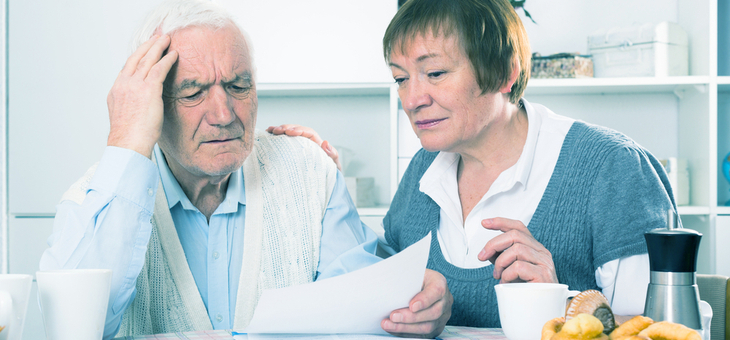More older Australians are struggling with rent stress and the federal government’s Commonwealth Rent Assistance (CRA) is not keeping up with rising rental costs, according to the Council to Homeless Persons.
The group was responding to new data from the Australian Institute of Health and Welfare (AIHW), which revealed that CRA and social housing availability were failing to protect older Australians from rent stress and homelessness.
The data showed that the number of older Australians still in rent stress after receiving CRA increased by 11 per cent between 2019 and 2020, from 40,562 to 45,199 households.
Overall, 487,884 households across Australia were deemed to be in rental stress in 2020, despite receiving CRA.
Read more: Lift supplement by 30 per cent, PM urged
Council to Homeless Persons acting CEO Kate Colvin says more vulnerable older Australians are being pushed to the brink of homelessness as the rising cost of rent consumes more of their incomes.
CRA is indexed against the Consumer Price Index, which has been dwarfed by increases in rent – especially in capital cities.
“Everyone needs a home, and Commonwealth Rent Assistance is intended to make private rentals affordable,” Ms Colvin says.
“But the high cost of rent in capital cities and skyrocketing rents across regional Australia mean older Australians on low incomes are being left behind.
“More than 480,000 Australian households are paying over 30 per cent of their income on rent and having to make devastating choices between paying the rent, and buying food, or medicine or paying their winter heating bill.
“No Australian should be forced to choose between food and rent. The federal government needs to increase CRA to give low-income renters more help to meet the high and growing cost of rents.”
Read more: Shopping tip could save you thousands
A 2020 report, compiled by independent researcher the Australian Housing and Urban Research Institute (AHURI), said the rent assistance program was inequitable, inefficient and failed its mandate of helping low-income private renters with their living costs.
Rachel Lane, the principal of Aged Care Gurus and co-author of Aged Care, Who Cares?, identified three reforms in a column for Nine:
- Increasing rent assistance payments by 30 per cent at a cost of about $1 billion a year.
- Resetting the minimum rent thresholds, reducing the number of low-income renters in housing stress by 36 per cent, while saving the government $938 million.
- Better targeting of payments to reduce housing stress for 370,000 low-income renters, including 240,000 more who would become eligible. The move would see 330,000 higher-income people lose rent assistance and save the government about $1.2 billion a year.
Rent assistance for eligible pensioners is paid as a supplement – up to $140 a fortnight for singles and $132 a fortnight for couples. However, the rules around who can receive the payments have several anomalies.
“Many pensioners who really need rent assistance are not receiving it,” Ms Lane wrote. “Some should be getting more while others receiving payments probably don’t need them.”
She said the CRA was complex, inequitable and needed major reform.
Read more: How to make your rental feel more like home
The 2021 Anglicare Rental Affordability Snapshot surveyed more than 74,000 rental listings across Australia and found that despite the Age Pension being one of the “most generous” government payments available, only 0.5 per cent of rental properties on the market were affordable for a single age pensioner and just 2 per cent for couple pensioners.
Do you receive Commonwealth Rent Assistance or know someone who does? Has the rate of payment kept up with rising living costs? What rate of payments would be realistic? Share your thoughts in the comments section below.
If you enjoy our content, don’t keep it to yourself. Share our free eNews with your friends and encourage them to sign up.

